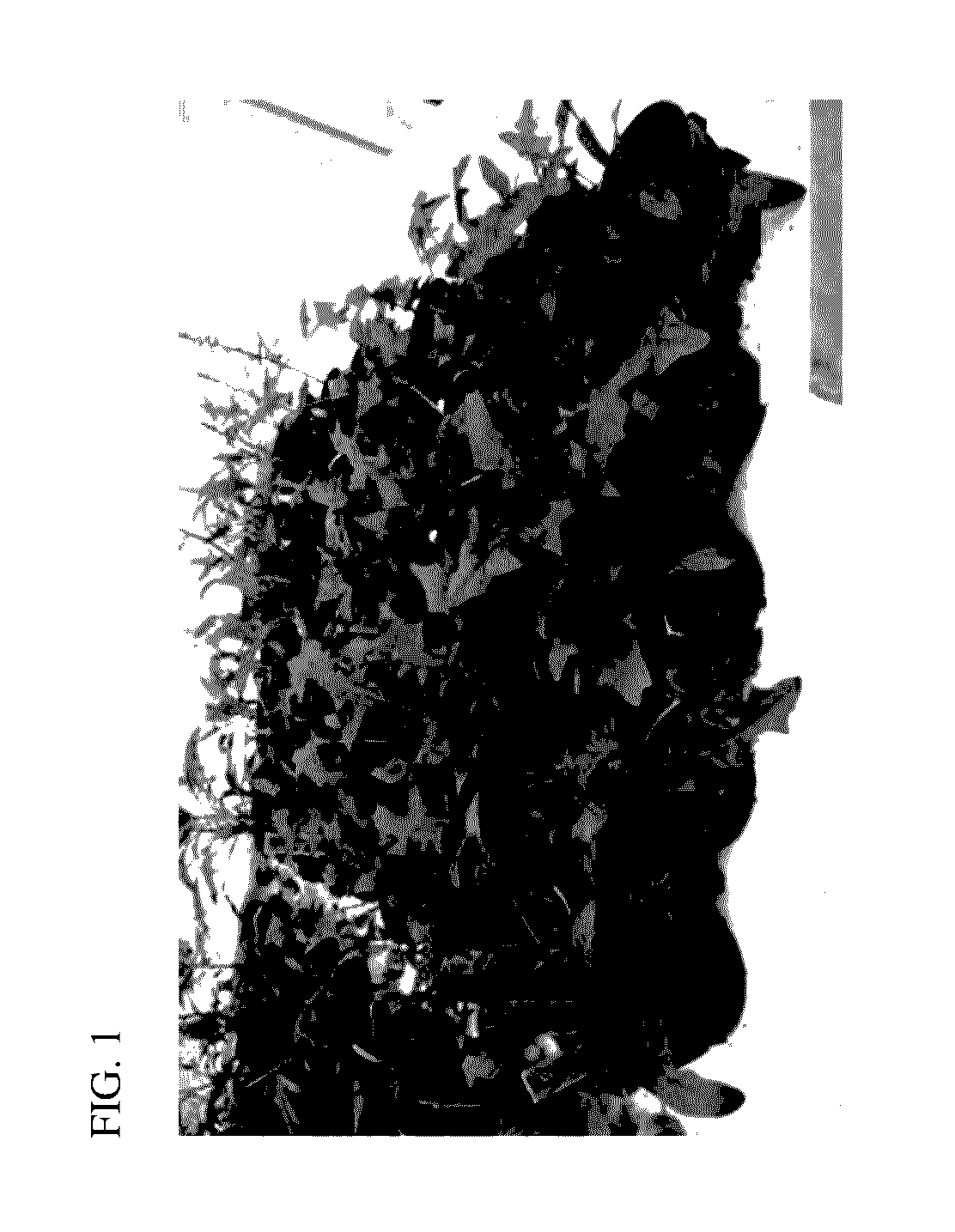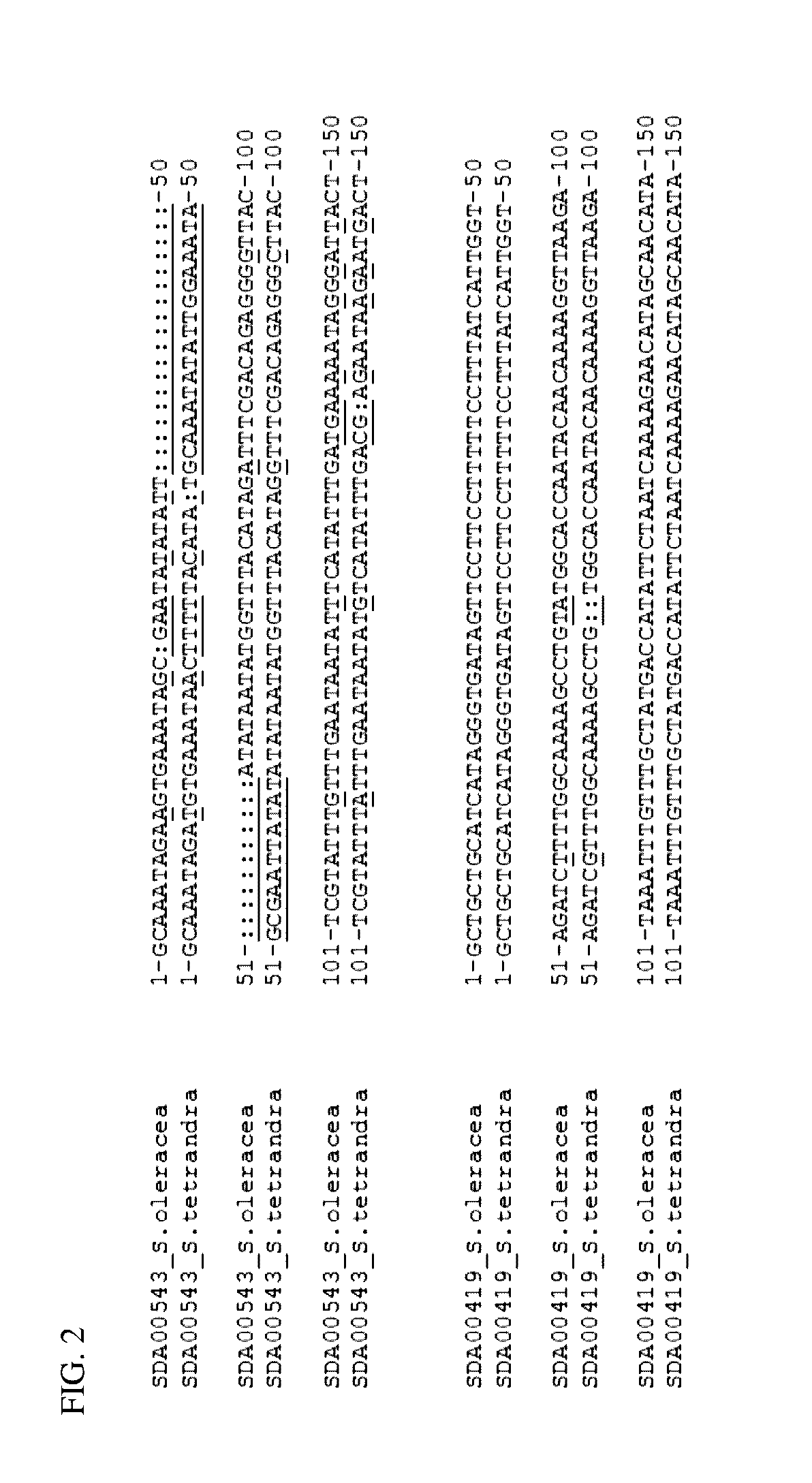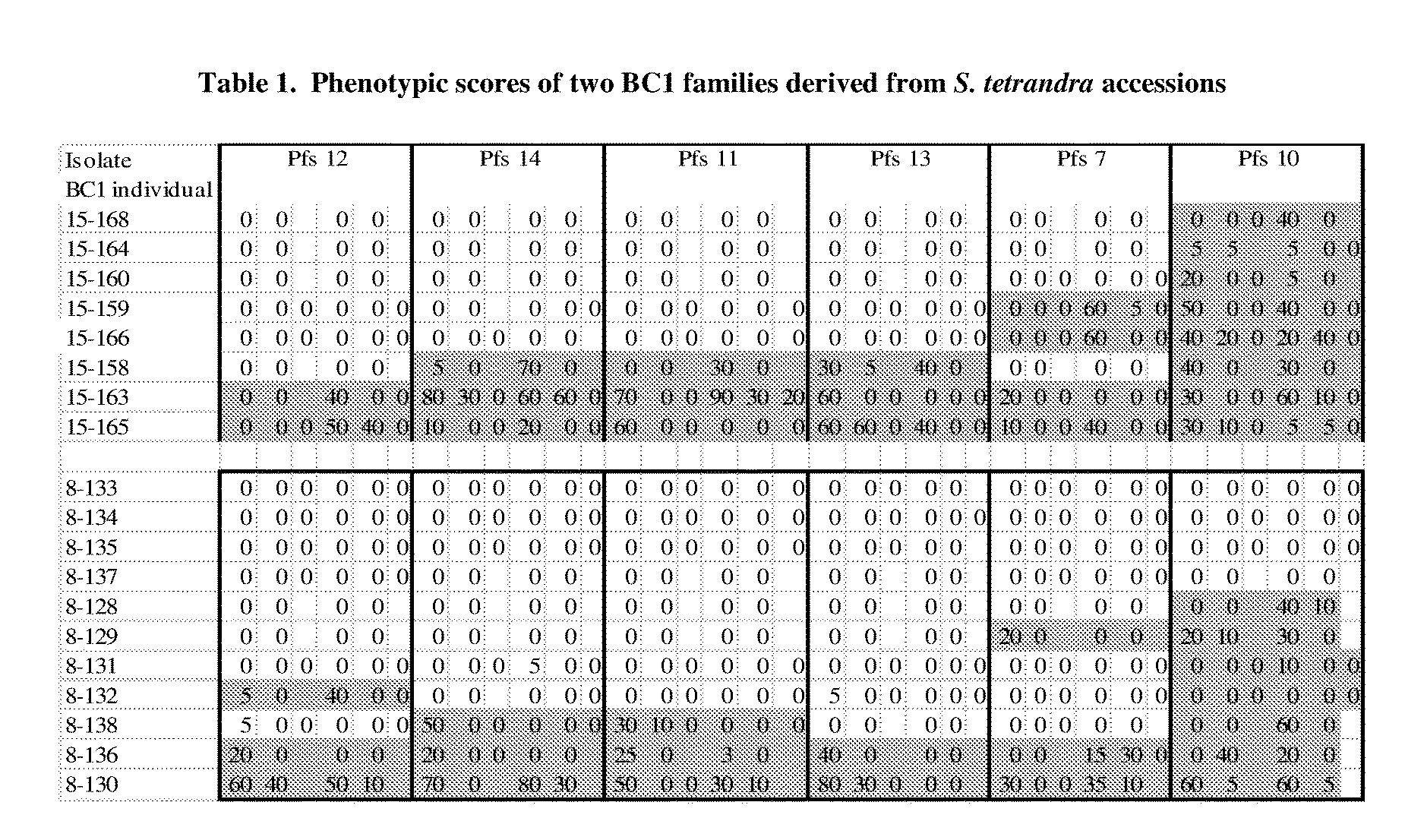Methods and Compositions for Peronospora Resistance in Spinach
a technology of peronospora and composition, applied in the field of methods and compositions for peronospora resistance in spinach, to achieve the effects of broad-spectrum resistance, broad-spectrum resistance, and broad-spectrum resistan
- Summary
- Abstract
- Description
- Claims
- Application Information
AI Technical Summary
Problems solved by technology
Method used
Image
Examples
example 1
Identification of Broad Spectrum Resistance to Downy Mildew in Spinacia tetrandra
[0070]Spinacia tetrandra represents a small subset of the Spinacia genebank collections available. Four accessions of S. tetrandra were included in the study. A disease test, such as the assay described in Example 2, was designed to include the four S. tetrandra accessions, three additional S. turkestanica accessions, and one accession of an unknown species, possibly S. tetrandra. Non-cultivated spinach accessions such as S. tetrandra exhibit difficult seed dormancy issues that can cause problems in plant breeding. In the present study, compared to other entries, S. tetrandra seeds suffered from severe lack of germination, consistent with a study by Brenner (The U.S. Spinach Germplasm Collection, paper presented at The T. E. Morelock International Spinach Conference, Fayetteville, A R, 2009), which observed from 9 S. tetrandra accessions that some seeds germinated in the Fall following January planting...
example 2
Assays for Screening Spinach Accessions for Resistance to Downy Mildew
[0075]The test utilized for screening spinach accessions for resistance to downy mildew originated from the International Union for the Protection of New Varieties of Plants (UPOV). The “Protocol for Tests on Distinctness, Uniformity, and Stability of Spinacia oleracea L. Spinach,” UPOV Code: SPINA_OLE, CPVO-TP / 055 / 5 was adopted and into force on Feb. 27, 2013. The protocol is as follows:
[0076]Races of Peronospora farinosa f sp. spinaciae are maintained on living host plants, obtainable from Naktuinbouw (P.O. Box 40, NL-2370 AA, Roelofarendsveen, Netherlands, naktuinbouw.com), or plant material with spores stored at −20° C. for a maximum of one year.
[0077]Execution of test: Growth stage of plants: First cotyledons / leaf, eleven-day-old plants; Temperature: 15° C. during day / 12° C. during night; Light: 15 hours per day, after emergence; Growing method: In soil in pots or trays in a glasshouse or growth chamber.
[0078...
example 3
Mapping Resistance to Downy Mildew in S. tetrandra
[0082]In view of the disease assay and heterogeneity of S. tetrandra, markers associated with resistance were identified for efficient and accurate selection of favorable alleles. Resistance to DM inherited from S. tetrandra was mapped in a BC1 population, which was developed as described in Example 1. A total of 54 individuals were phenotyped using Peronospora farinosa f sp. spinaciae race 12. These BC1 individuals were scored in two classes, demonstrating either strong resistance or a fully susceptible response. Markers located within a narrow interval of Linkage Group 6 (LG6) that encompasses resistance in S. oleracea were selected for further study (Table 4) (Khattak et al., Euphytica 148:311-318, 2006). A mapping study was performed with mapQTL using the standard interval mapping.
[0083]A resistance locus was detected and demonstrated by statistically significant association (>LOD=3) of markers in the interval delineated by conv...
PUM
| Property | Measurement | Unit |
|---|---|---|
| RH | aaaaa | aaaaa |
| resistance | aaaaa | aaaaa |
| Plant disease resistance | aaaaa | aaaaa |
Abstract
Description
Claims
Application Information
 Login to View More
Login to View More - R&D
- Intellectual Property
- Life Sciences
- Materials
- Tech Scout
- Unparalleled Data Quality
- Higher Quality Content
- 60% Fewer Hallucinations
Browse by: Latest US Patents, China's latest patents, Technical Efficacy Thesaurus, Application Domain, Technology Topic, Popular Technical Reports.
© 2025 PatSnap. All rights reserved.Legal|Privacy policy|Modern Slavery Act Transparency Statement|Sitemap|About US| Contact US: help@patsnap.com



